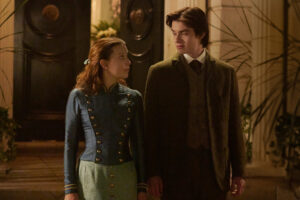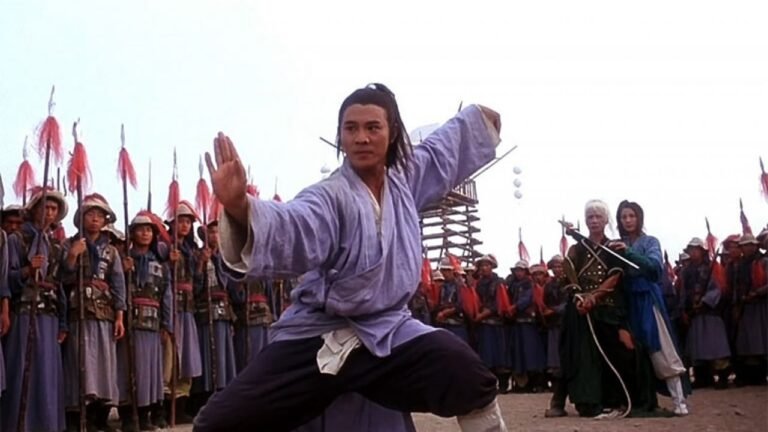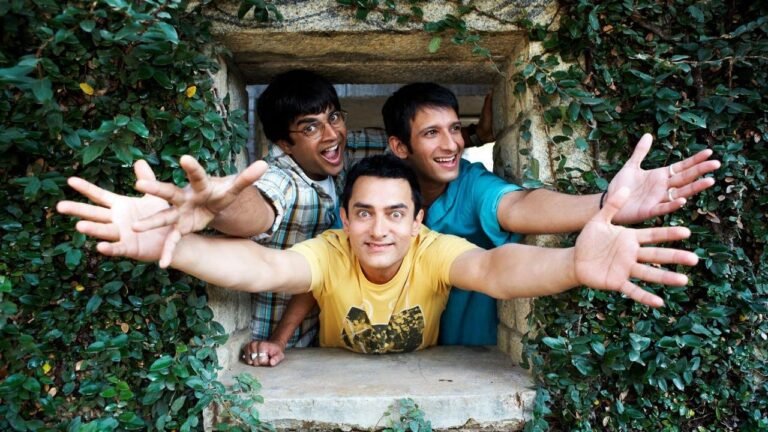
The “Enola Holmes” movies, featuring Millie Bobby Brown as the titular young detective, have captivated audiences with their blend of mystery-solving intrigue and period drama. While the plots of these films are engaging and full of clever twists, it is the characterization—more than the plot—that truly stands out as their greatest strength. By focusing on richly developed characters, the “Enola Holmes” films deliver a heartfelt and relatable story that vibes deeply with viewers.
The centerpiece of both films is, of course, Enola Holmes herself. Millie Bobby Brown’s portrayal of Enola is both spirited and refined, creating a character that is intelligent, independent, and refreshingly modern, despite the historical setting.
Enola deviates from the traditional Victorian female archetype. She is not content to sit idly by while her fate is determined by societal norms. Instead, she is proactive in seeking out her missing mother and embarking on her own adventures. This determination sets the tone for her character, making her an inspiring figure for young audiences, particularly young women.

Enola’s character is also layered with vulnerability and personal growth. Throughout the films, she grapples with the expectations placed upon her as a young woman in Victorian England and the desire to forge her own path. This struggle, along with her moments of doubt and joy, makes her deeply relatable. Audiences see her not just as a junior detective but as a young person navigating the challenges of identity, family, and society.
Henry Cavill’s portrayal of Sherlock Holmes offers a fresh take on the iconic detective. Rather than focusing solely on his genius, the films explore his role as Enola’s older brother, adding depth to his character.
Sherlock’s relationship with Enola is multifaceted. He is simultaneously protective and distant, caught between his duties as a detective and his responsibilities as a brother. This dynamic adds richness to his character, showing a softer, more human side often absent in other portrayals of Sherlock. His gradual realization of Enola’s capabilities and his respect for her independence highlight his own growth and depth.
Sherlock’s character in the “Enola Holmes” movies is not just about solving cases. He learns to balance his renowned intellect with empathy and familial love. His journey from a detached, analytical mind to a brother who genuinely cares for Enola’s well-being is a subtle but powerful narrative thread that highlights the emotional core of the films.

Helena Bonham Carter plays Eudoria Holmes, Enola’s enigmatic mother, whose disappearance sets the stage for the first film’s plot. However, it is Eudoria’s characterization that leaves a lasting impact.
Eudoria is portrayed as a fiercely independent woman and a revolutionary, committed to social change. Her unconventional methods and teachings shape Enola’s worldview, emphasizing critical thinking, self-reliance, and courage. Eudoria’s character serves as both a mystery to unravel and a source of inspiration, driving Enola’s quest not just to find her, but to understand her own place in the world.
Even in her physical absence, Eudoria’s presence is felt throughout the films. Her teachings and philosophies echo in Enola’s actions and choices, highlighting the significant impact a strong, albeit unconventional, maternal figure can have. This character nuance adds layers to the narrative, as viewers are constantly reminded of Eudoria’s influence.
The supporting characters in the “Enola Holmes” movies also play crucial roles in enhancing the narrative through their distinct and well-rounded portrayals.
Louis Partridge’s Lord Tewkesbury starts as a character in need of rescuing but develops into a trusted companion for Enola. His character arc from a naive noble to someone who actively participates in his destiny adds depth to their relationship and showcases his growth. His interactions with Enola provide insight into both characters’ vulnerabilities and strengths.
Sam Claflin’s Mycroft Holmes and Adeel Akhtar’s Inspector Lestrade offer contrasting perspectives on authority and societal expectations. Mycroft, as the epitome of Victorian conservatism, serves as a foil to Enola’s progressive views, while Lestrade’s evolving respect for Enola’s abilities adds a layer of societal critique, questioning traditional authority figures.
While the plots of both “Enola Holmes” movies are extremely engaging and well-crafted, it is the characters that truly drive the story forward. The films prioritize character development, allowing the audience to form deep connections with the characters. This character-driven approach is the heart of the “Enola Holmes” movies, making them more than just mystery adventures.
Characters like Enola, Sherlock, and Eudoria provide emotional anchors for the story. Their personal journeys, relationships, and growth create an emotional resonance that pure plot-driven narratives often lack. Viewers are not just interested in the “what” of the story, but also the “who” and the “why,” drawn into the characters’ lives and transformations.
The modern sensibilities infused into the characters make them relatable to contemporary audiences. Themes of independence, gender roles, and social change are explored through the characters, adding a feel of relevance that resonates beyond the period setting.
Characterization stands out as the greatest strength of these two movies, elevating them from mere mystery adventures to rich, character-driven narratives that connects deeply with audiences. By focusing on strong, multidimensional characters like Enola, Sherlock, and Eudoria Holmes, the films create an engaging and emotionally compelling story. It’s the depth, growth, and relatability of these characters that truly captivate viewers, making “Enola Holmes” a memorable and impactful cinematic experience.




